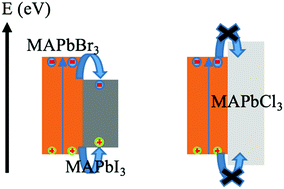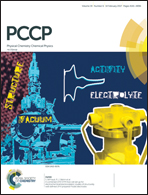An optical dynamic study of MAPbBr3 single crystals passivated with MAPbCl3/I3-MAPbBr3 heterojunctions†
Abstract
Recently, perovskite based solar cells have attracted lots of research interest, some of which is in the passivation of perovskite surfaces, particularly the heterojunction based surface passivation. In this study, the optical dynamics of MAPbBr3 single crystals with and without heterojunction passivation were studied systematically by means of a time-resolved spectroscopic technique for the first time. The emission lifetime of MAPbBr3 single crystals under two-photon (1064 nm) excitation is a few orders of magnitude longer than that measured under one-photon (355 nm or 532 nm) excitation. Interestingly, with surface passivation, the lifetime measured at 355 nm excitations could be tuned significantly, whereas the lifetime change under 1064 nm excitations was considerably less. Our results give a direct evidence of surface quench by comparing the lifetimes before and after surface passivation. Furthermore, the results demonstrate that proper MAPbCl3–MAPbBr3 heterojunctions can dramatically reduce the recombination channels in the surface region, which can be potentially useful for perovskite based solar cells, light emitting diodes (LED), and sensitive detectors.



 Please wait while we load your content...
Please wait while we load your content...